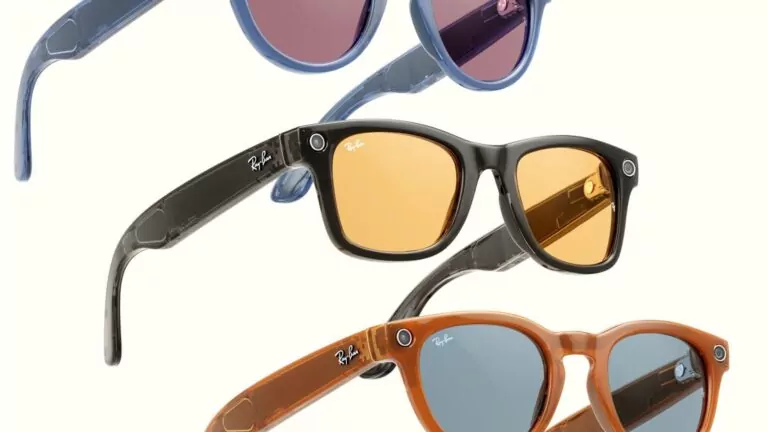
As you may have heard, Meta announced Q3 earnings last week. It had a strong quarter with $40.6 billion in revenue, up 19 percent year-over-year. This was driven by AI integrations in ad targeting, replacing its previous and troubled (and mostly restricted) behavioral targeting.
Resting under those high-level Q3 results, Meta Reality Labs’ (MRL) revenue was $270 million. This is up 29 percent year-over-year, but down 23 percent quarter-over-quarter. The former is the more apples-to-apples metric considering cyclical sales patterns throughout a given year.
Q3 also marks the third consecutive quarter of positive year-over-year growth, which is partly due to MRL underperformance in 2023. That represented the waning stages of Quest 2’s lifecycle. Q3 2024’s growth is conversely propelled by Quest 3 and Ray-Ban Meta Smartglasses.
There’s much to be said about market timing and positioning. But our main question today is how Q3 revenue translates to headset unit sales. This is an exercise we’ve done every quarter for several years (see last quarter), which helps inform broader VR momentum and market sizing.
Data Dive
Diving in, Reality Labs made $270 million in Q3, as noted. As done in the past, we can use this figure to reverse-engineer unit sales. This exercise gets harder and harder every year due to more revenue sources. It’s not just Quest 1 & 2 anymore… but several headsets in the mix.
To that end, we’ve estimated Meta Reality Labs’ revenue share breakdowns based on several signals we’re tracking. You can see those share estimates below. In this hardware-centric exercise, we’ll focus on the last five bullets, which account for 80 percent of MRL revenue.
- VR software (game & app sales): 18 percent*
- First-party accessories (head straps, etc): 2 percent
- Quest 2: 2.5 percent (discontinued but available until stock runs out)
- Quest 3: 59 percent
- Quest 3s: 0 percent (available starting in Q4)
- Quest Pro: .5 percent (discontinued but available until stock runs out)
- Ray-Ban Meta Smart Glasses: 18 percent
Quest 2
Based on the above revenue shares, Quest 2’s estimated Q3 revenue was $6.75 million. Considering a Q3 average unit price of $200**, Meta sold an estimated 33,750 units during the quarter.
Quest 3
Based on the above revenue shares, Quest 3’s estimated Q3 revenue was $159.3 million. Considering a Q3 average unit price of $549***, Meta sold an estimated 290,164 units during the quarter.
Quest Pro
Based on the above revenue shares, Quest Pro’s estimated Q3 revenue was $1.35 million. Considering a Q3 unit price of $999**, Meta sold an estimated 1,351 units during the quarter.
Ray-Ban Meta Smart Glasses
Based on the above revenue shares, RBMS estimated Q3 revenue was $48.6 million. Considering a Q3 unit price of $329 (and a revenue split with EssilorLuxottica), An estimated 294,545 units were sold during the quarter.
Grand Total
Adding up all headsets, we get an estimated 619,811 units sold in Q3 – or 325,265 if considering just VR headsets.
*This figure represents the Oculus Store’s gross revenue, before developer payouts, which are usually 70 percent after taxes. Meta realizes 100 percent of revenue in some cases, such as first-party titles and releases from VR game studios it has acquired (e.g., Beat Games).
**Quest 2 and Quest Pro were both discontinued in September, but are still available until the end of 2024, or until supplies run out, whichever happens first.
***During Q3, Quest 3’s 128GB base model was $499.99 while the 512GB model was $649.99. This averages out to $549, given weighted sales at the lower end.
License to Invest
So there you have it. Of course, much of this exercise is based on the above-estimated revenue shares across Meta Reality Labs’ commercial products. Those share estimates are educated but up for debate: anyone can adjust them and calculate accordingly using the above model.
We should also address the elephant in the room: Meta Reality Labs’ ongoing expenses. They reached $4.7 billion, which is substantial but a slight improvement from the $4.84 billion spent in Q2. The headline here is astronomical losses as Meta invests in the future of computing.
The other factor that plays into the above figures is Meta’s XR adoption accelerants. The first was already noted: renewed VR demand given the novelty, performance, and value of Quest 3. The same can be said for the breakout-hit Ray Ban Meta Smartglasses, now with multimodal AI.
The second accelerant sits down the road in Cupertino: Vision Pro. Apple tends to mainstream entire product categories when it enters markets. In Vision Pro’s case, this halo effect boosts mixed-reality demand and could buoy competitive devices with drastically lower price tags.
Quest 3 is at the top of that list, followed by immersive entertainment devices (Vision Pro’s top-marketed use case) such as Xreal Air 2. Put more simply and directly, Vision Pro could have a part in propelling Quest 3 sales. But in fairness, Quest 3 is reputable on its own merits.
In that sense, Meta has validated demand and turned things around from last year. Performance in its core business also gives it license to invest in the future. In other words, there’s less handwringing on Wall Street over Meta eating dessert without finishing its vegetables.

